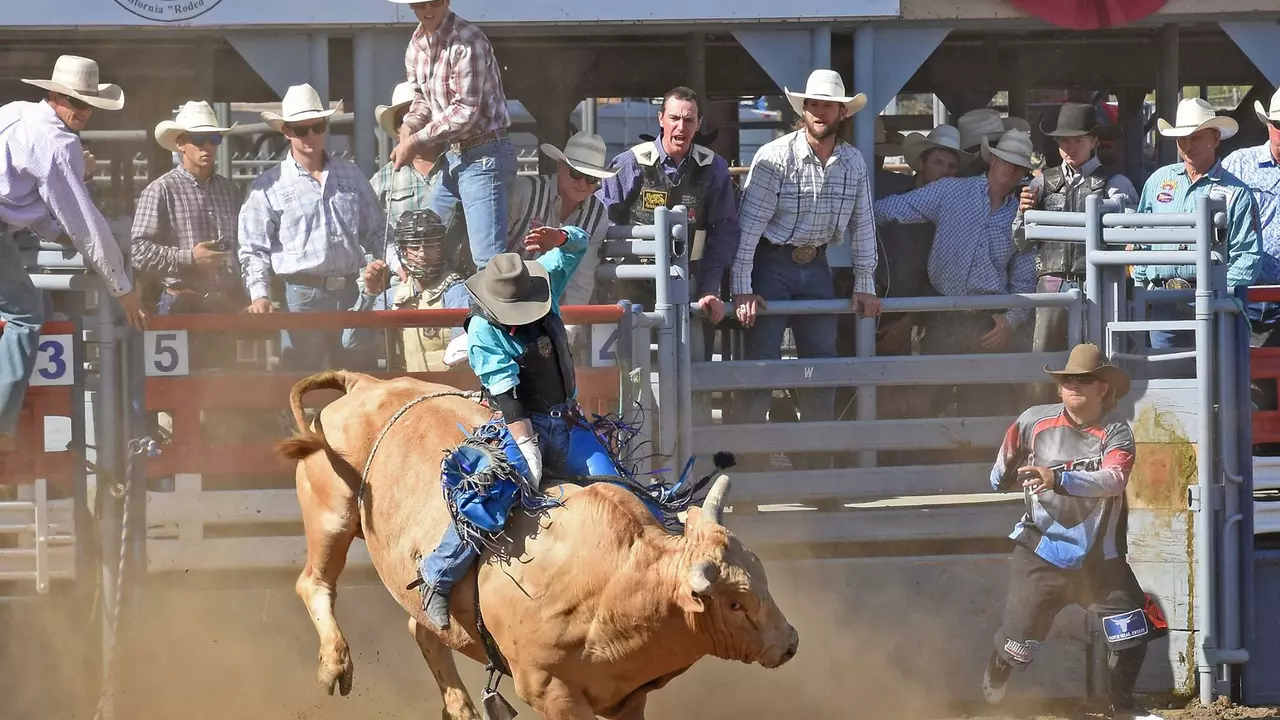Understanding the Rodeo
Before we delve into the main subject matter, it's crucial to have a basic understanding of what a rodeo really is. A rodeo is a competitive sport that originated from the working practices of cattle herding in Spain, which was later adopted in Mexico, the United States, Canada, South America, and Australia. It comprises various events that involve horses and other livestock, designed to test the skill and speed of the cowboys and cowgirls. Some common events include tie-down roping, team roping, steer wrestling, saddle bronc riding, bareback bronc riding, bull riding, and barrel racing.
The Thrill of Bull Riding
Bull riding is probably the most famous and thrilling event in a rodeo. This event involves a rider getting on a large bull and trying to stay mounted while the animal attempts to buck off the rider. The rider tightly fastens one hand to the bull with a long braided rope. It's a risky event that requires not only physical strength but also a great deal of mental toughness. It's considered by many to be the most dangerous event in rodeo competition.
The Challenge of Bronc Riding
Just like bull riding, bronc riding is another physically demanding event in a rodeo. The rider mounts a horse, which tries to throw the rider off its back. There are two types of bronc riding: bareback and saddle bronc riding. Bareback bronc riding is where the participant rides a horse without the benefit of a saddle, while saddle bronc riding, as the name suggests, involves a saddle. Both require a strong sense of balance and strength.
Comparative Analysis: Bull vs Bronc Riding
Now that we have a basic understanding of both bull and bronc riding, let's compare the two. In both events, the rider aims to stay on the animal as long as possible. However, the challenge level varies depending on the temperament and strength of the animal, the skill level of the rider, and the specific rules of the event.
Physical Demands of Bull and Bronc Riding
Both bull and bronc riding are physically demanding, requiring strength, agility, and balance. However, bull riding often seems more demanding due to the bull's size, power, and unpredictability. The bulls used in these events can weigh over 2000 pounds and are explicitly bred for their strength and aggression. On the other hand, broncs, while also powerful, are generally smaller and less random in their bucking.
Psychological Aspects of Bull and Bronc Riding
Psychologically, both events are challenging. The risk of serious injury is high, and the pressure to perform well can be intense. The mental game is particularly crucial in bull riding, where the rider must stay focused and calm despite the bull's unpredictable movements and the inherent danger of the event. Bronc riding also requires a high level of focus, but the horse's movements are typically more predictable, which can make it easier to prepare mentally.
Assessing the Level of Danger
Riding a large, powerful, and unpredictable bull is generally considered more dangerous than riding a bronc. Bulls are known for their aggression and unpredictability, making them more likely to cause serious injury if the rider falls or is thrown. On the other hand, while broncs can certainly be dangerous, their movements are more predictable, and they are less likely to cause serious injury.
Skills Required for Bull and Bronc Riding
Both bull and bronc riding require a unique set of skills. For bull riding, a rider needs to have excellent balance, strong legs, and a good grip. It's crucial to anticipate the bull's movements and react quickly. For bronc riding, skills such as timing, balance, and strength are important. The rider needs to be able to move with the horse and keep their balance despite the animal's attempts to buck them off.
Final Verdict: Which is Harder to ride, a Bronc or a Bull?
So, which is harder to ride? A bull or a bronc? Well, the answer might vary depending on who you ask. However, most would agree that due to the size, power, and unpredictability of bulls, bull riding is generally considered harder and more dangerous than bronc riding. That said, both events require a high level of skill, strength, and bravery, making them both challenging in their own right.
